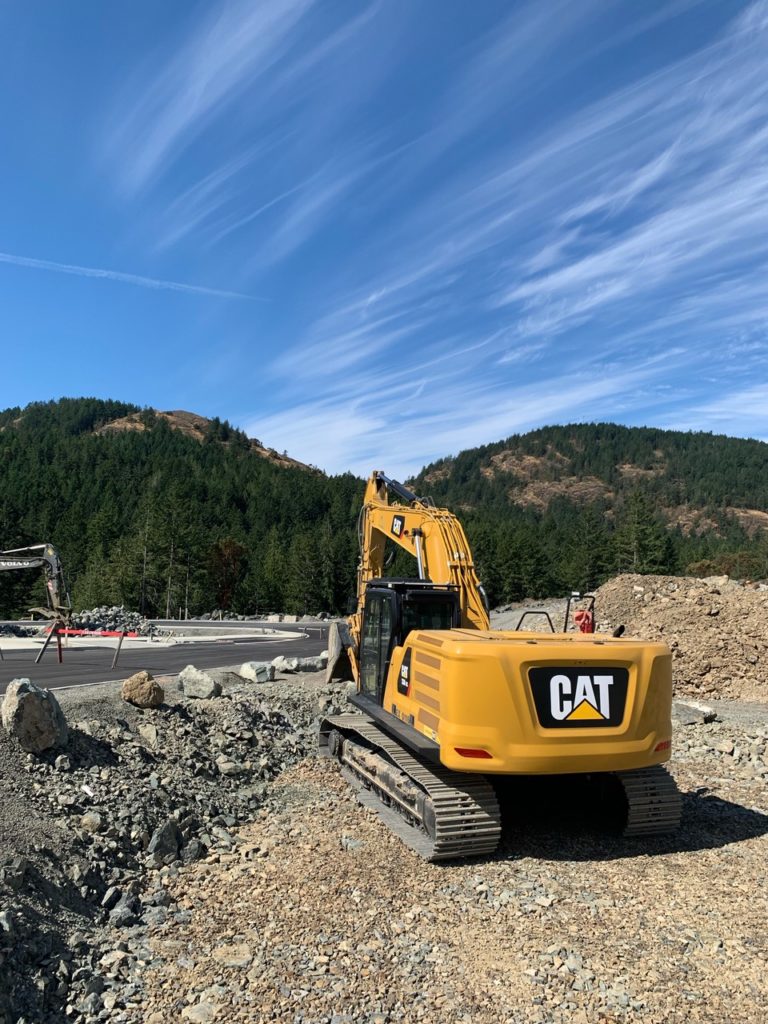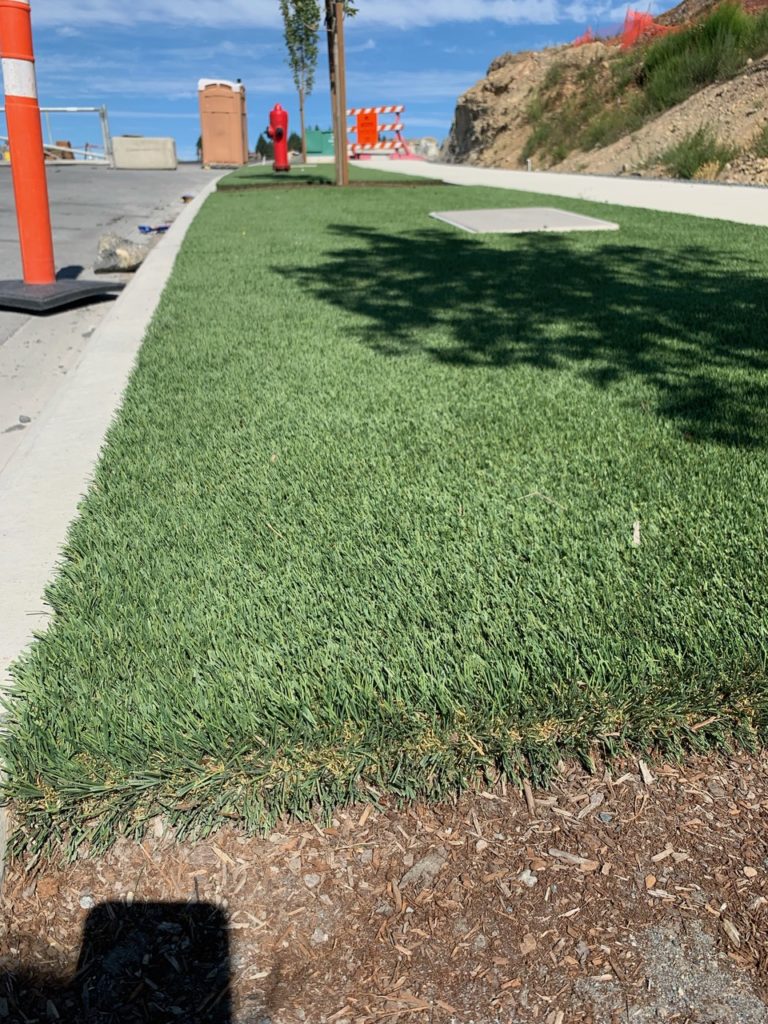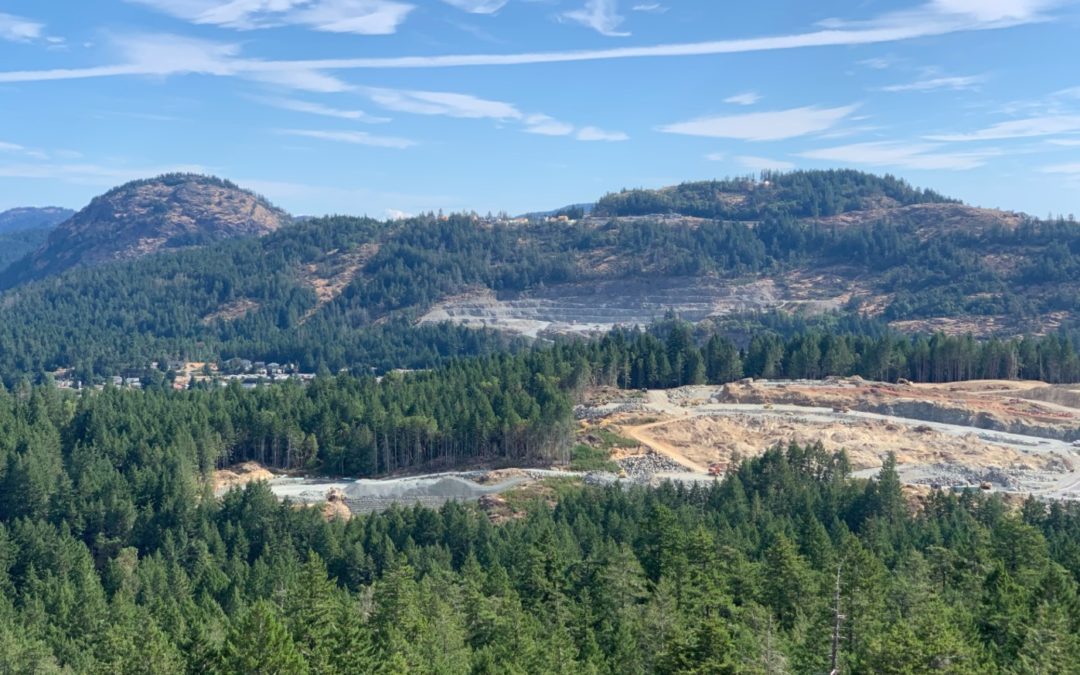Main image: Developments hard up against Mt Finlayson, Mt Wells and Mt McDonald ruin park integrity on every level and undermine the Sea to Sea Greenbelt vision.
The CRD’s extensive park system of protected forest areas is crucial to the survival of our region’s biodiversity. It also plays a critical role in sequestering CO2 and this will be maximized only by maintaining the biodiversity of these forest ecosystems including the large predators which are keystone species.

Development impacts Mt Wells and Mt. McDonald in Sooke Hills Wilderness Regional Park
The latest IPCC report on Climate Change is a ‘code red’ for humanity. We have a responsibility to protect the natural ecosystems in our own back yard to help with a planetary course correction. Anyone with children or grandchildren must shudder to think of what the alternative will be for them on our current course.
In the 17 years since the major expansion of the regional parks system through the Sea to Sea Greenbelt Initiative next to nothing has been done to prioritize the protection of this irreplaceable ecological asset. A recent staff report entitled “Ecological Values and Biodiversity in Regional Parks” bears this out. We need our own course correction here in the CRD.
If we are sincere about our climate change emergency declaration with respect to our parks then:
1. Every park management policy and action must be viewed and implemented through a climate emergency lens.
2. We must increase the capacity of the Park Land Acquisition Fund and ensure that all new acquisitions prioritize lands that link and buffer existing parklands to protect and enlarge core wildlife habitats and increase biodiversity resilience.
 3. We must work with municipalities, indigenous communities and other levels of government to acquire, zone or otherwise protect undeveloped lands adjacent to parks to stop high density housing developments from destroying park ecological integrity. Like the disaster on the flanks of Mt Wells Regional Park where developers scraped off acres of natural landscape down to bedrock and put in housing with plastic grass, all highly visible from the once magnificent viewpoint at the park’s summit…… or at Thetis Lake Regional Park where an apartment block now looms over the parking area near the lake with more to come, ruining views and sound scapes within the park and creating a heat sink that will surely kill more trees along the park boundary and beyond in an already climate stressed environment. Will we let this happen on the west bank of Sooke Potholes Regional Park and at the Magical Mountain Property on Finlayson Arm both critical links in the Sea to Sea Greenbelt vision. I hope not.
3. We must work with municipalities, indigenous communities and other levels of government to acquire, zone or otherwise protect undeveloped lands adjacent to parks to stop high density housing developments from destroying park ecological integrity. Like the disaster on the flanks of Mt Wells Regional Park where developers scraped off acres of natural landscape down to bedrock and put in housing with plastic grass, all highly visible from the once magnificent viewpoint at the park’s summit…… or at Thetis Lake Regional Park where an apartment block now looms over the parking area near the lake with more to come, ruining views and sound scapes within the park and creating a heat sink that will surely kill more trees along the park boundary and beyond in an already climate stressed environment. Will we let this happen on the west bank of Sooke Potholes Regional Park and at the Magical Mountain Property on Finlayson Arm both critical links in the Sea to Sea Greenbelt vision. I hope not.
4. We must provide adequate funding and staffing to carry out the kind of comprehensive plan proposed but shelved in a 2010, including a conservation strategy, baseline ecological inventories, a state of the parks assessment and an ecological monitoring program.
5. Finally we must establish a scientific advisory group of conservation biologists to inform best parks management decisions.
The 2012 – 2021 Regional Parks Strategic Plan states “ the volunteer Citizen Advisory Panel (CAP) and the majority of the public felt that Regional Parks is on the right path and nature protection and conserving biodiversity should be Regional Parks’ top priority.” This echoes the same sentiment expressed in earlier and later public surveys. In the current climate crisis this public point of view has only strengthened.
I hope that in the obvious urgency of our times our elected representatives will at last make real the protection of nature and the conservation of biodiversity in our parks as the top priority promised.
Alison Spriggs
Former parks campaigner with the Wilderness Committee and The Land Conservancy
and a member of the Elders Council for Parks in BC

As an addendum to my post …. I want to acknowledge that there are many representatives on our municipal councils and on the CRD Board who are working hard to do the right thing and protect the integrity of our parks biologically and otherwise. I applaud their uphill battle to bring management of our yet outstanding Regional Parks System into allignment with the unanimously declared climate emergency and with the UN and National call to protect biodiversity – our life support system on this little planet ….. our home.
Thank you for this post, we MUST rescue Magical Mtn, & remain ever-more vigilant about forest preservation as overpopulation continues unabated. Bears come into suburbia to find food (& get shot for their trouble) because suburbia is spreading into & stealing their own habitat.
Hi Sandra. Thanks for your comment. I’d like to talk to you further and wonder if you would share your email with me through Frances at Creatively United.
Alison